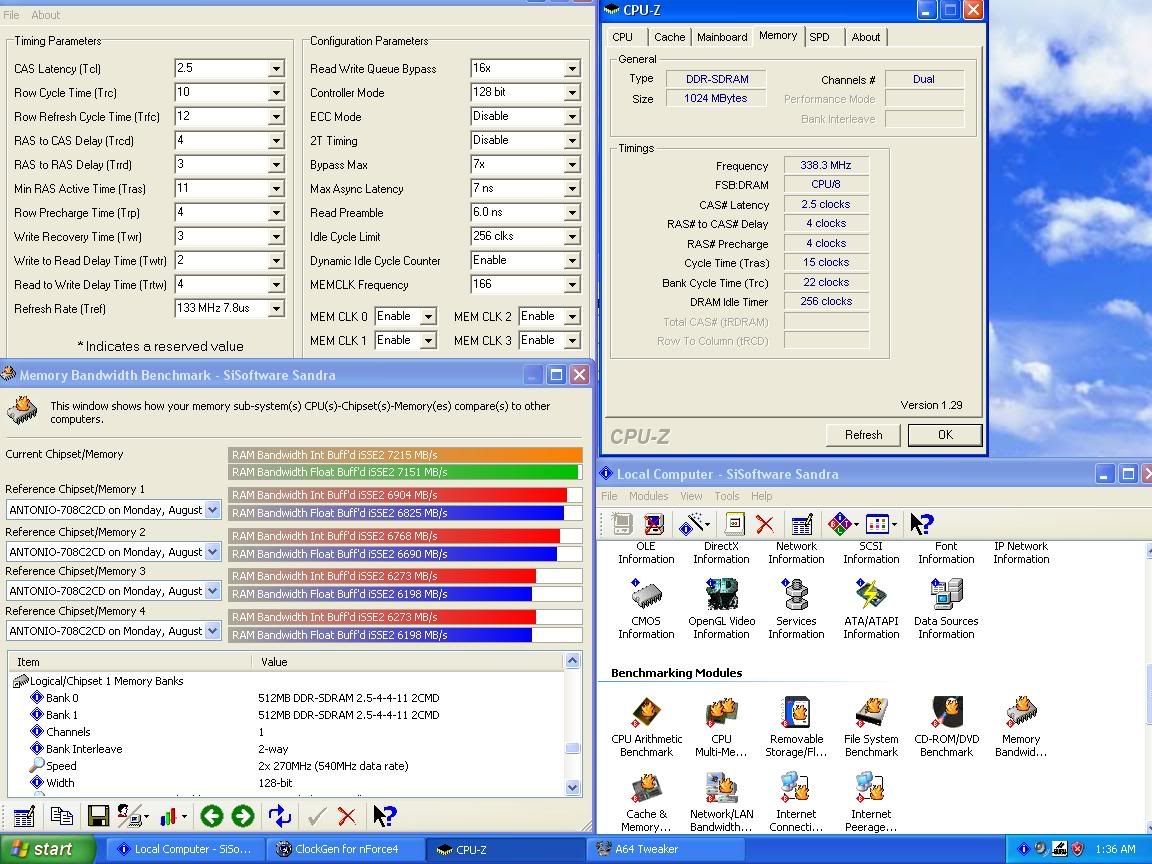QUOTE(antonio_zth @ Aug 6 2005, 11:37 AM)
how come u can get DC while u are using 3 sticks of rams??funny....
Yo dude, this is something that I've posted in hardware forum :
QUOTE(charge-n-go)
Dual channel is actually rather simple. A non-dual channel board only has 64 wires connected from RAM slot to CPU socket. A dual channel board js add another 64 wires to become 128 wires, and of course with some controlling scheme added.
Taking an example of dual channel motherboard with 2 RAM slots only. Each RAM slot will have 64 wires (64-bit) connected to CPU, so both of them has a total of 128-bit. If you only put in one stick, there's no way it can use 128 wires, so dual channel mode isnt enabled. Hence, you need at least 2 sticks to run dual channel mode, regardless if the RAM is same or different, as long as it can be plugged into the RAM slot. Of course, a matched pair is the best choice as both RAM can run equally without being 'dragged' by another RAM's performance.
For a 3 RAM slots motherboard, 1 of them has 64-bit and another 2 slots shared a 64-bit channel. Let's say slot 1 has an independent 64-bit bus and slot 2 and 3 shared another 64-bit bus, u must plug the RAM into slot 1 and 2, or slot 1 and 3 for DC to work. Of course DC is enabled if u plug 3 RAMs into the board.
For a 4 RAM slots motherboard, 2 slots share a 64-bit channel. Usually slot 1 and 2 share one channel, whilst slot 3 and 4 share another channel. So the combination should be slot 1, 3 or slot 2, 4 if u have two RAM sticks. If u have 3 RAM sticks, js plug into slot 1,2,3 or 1,2,4 or 1,3,4 or slot 2,3,4. Both are running at DC mode too.
To verify the theory, I've tried 2 sticks and 3 sticks of RAM, and I get almost the same results (difference by 10MB/s, with 3 sticks slightly faster).






 Aug 4 2005, 05:31 PM
Aug 4 2005, 05:31 PM

 Quote
Quote



 0.0217sec
0.0217sec
 0.71
0.71
 6 queries
6 queries
 GZIP Disabled
GZIP Disabled